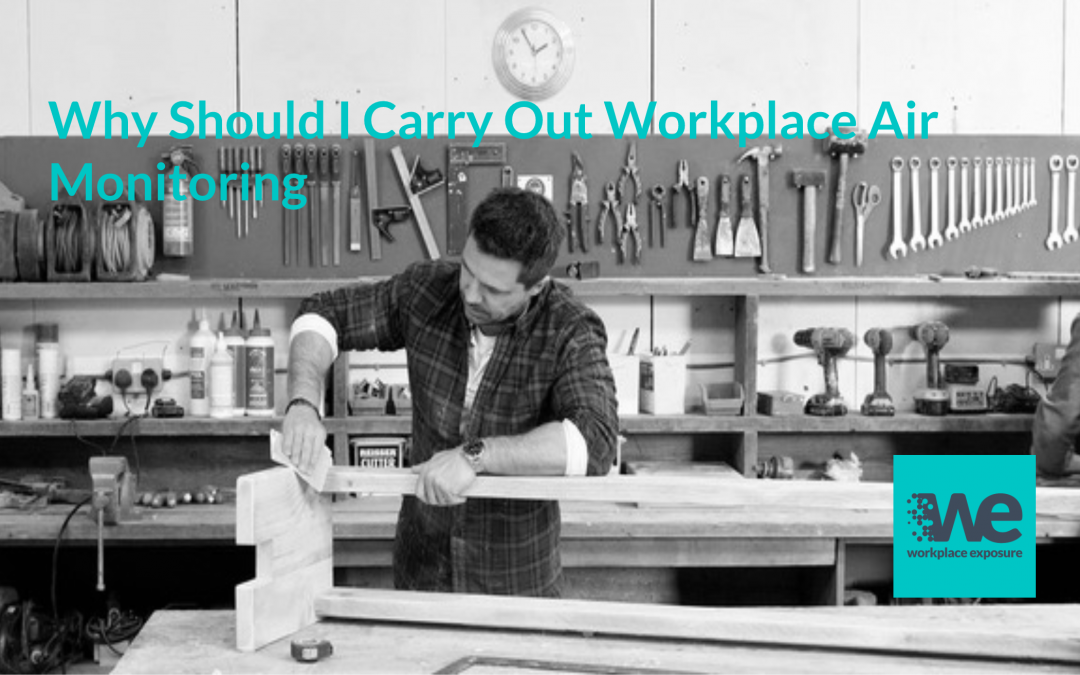Why do Workplace Air Monitoring?
How do you know when Workplace Air Monitoring is required. Is it required as part of your COSHH Risk Assessment? In recent blogs, we’ve explained what a COSHH Risk Assessment is, and provided a guide on How to carry out a COSHH Risk Assessment. But why should you carry out Workplace Air Monitoring.
In a workplace there are hazards that need to be considered, to find out the health risk level for workers. Activities in a workplace can mean, that various particles, chemicals and biological substances can become airborne. They can therefore, potentially be taken into the body, with the possible consequences of adverse health effects.
Substances can enter the body by many routes. These can make workers ill on a particular day, such as eye, skin, or respiratory irritation, or sometimes, more serious damage. Many substances though enter the body and their ill health effects are not found out until many years later.
Measurements
Measurements of such substances in the air will reveal if significant quantities are present. It will also show the exposure level that workers are taking into their body. It could be by inhalation, skin contact or ingestion. Sometimes workplace air monitoring has been carried out in the past. If the situation, substance or regulations have changed, a review would be required.
Workplace Air monitoring can be via hand held instruments to take spot checks on where and when emissions are released. Another method is to fit workers with battery powered sample pumps. These are attached to special tubes or filters onto which the substance is absorbed. There are many substances that can be measured, not just the obvious used in a process but those created, and those released in unusual circumstances, such as cleaning, maintenance tasks and machine faults.
Regulations
Regulation 10 of the COSHH Regulations requires air monitoring to provide information for the risk assessment and the requirement for exposure control in Regulation 7 with the overall aim of protecting the health of workers.
Results
The results obtained are compared with Workplace Exposure Limits (WELs). These are listed in the EH40/2005 document. Where limits do not exist guidance values should be used with extra advice given. These limits have legal standing in the Control of Substances Hazardous to Health (COSHH) Regulations 2002 (as amended). They reveal whether there is compliance with the COSHH Regulations. If the HSE find that an organisation has breached these limits then an investigation and enforcement action may be taken.
Having a reliable data set of workplace air monitoring, that contains several years of results, can help to show that a workplace is complying with the law and looking after the health of workers.
Competent Advice
It’s important to take advice from a competent source and control exposure. A Workplace Air Monitoring survey is worth more than just the numbers found from the exposure results and the air testing survey should never be just the numbers in a results table. A good workplace air monitoring survey and report will follow the HSE guidance contained in G409. This is the COSHH Essentials guide to exposure measurement & air sampling.
A full occupational hygiene assessment will also look at the working practices on site. Observations made during the sample days and an assessment of the control measures brings it all together.
What Next?
When the workplace air monitoring has been carried out and following the laboratory analysis, a comprehensive report should be provided. It should contain and provide practical recommendations for action. It should also state what you need to do to comply with COSHH Regulations as you have a legal duty to control substances that are hazardous to health.
An appropriate assessment of the risk level can then be made, that is backed by sound scientific data and methods.
It is then vital that the workplace takes the appropriate action to control risks and improve the situation. You should then review how the controls are working.
Mandatory Requirement
Another reason to carry out workplace air monitoring is that there are some specific industries or substances that have to have air monitoring carried out. One example is silica dusts. The HSE’s COSHH Essentials free leaflet QY10 states this is part of the strategy to controlling silica dust at quarries and other workplaces where stone cutting takes place.
For indoor air quality issues, such as in office environments air monitoring may still be required as low levels of airborne chemicals, or chemicals not normally in that place can still be a concern.
Other Benefits
There are other benefits from doing monitoring surveys. This includes workers feeling that they are being listened to and looked after in their working environment. To maximise these benefits it is best to get the workforce involved in the planning stages and provide helpful communication opportunities.
If you need any help or would like an informal chat regarding your needs, please get in touch.
Our approach
Get in touch with Workplace Exposure, either give us a call on 0800 689 4386, or fill in our enquiry form to discuss your monitoring or consultancy requirements.
We’ll then provide you with a no obligation proposal, we can often give an initial idea of fees whilst we discuss your needs.
Once you’ve accepted our proposal we can then schedule the work.
Following our site visit we’ll provide you with a comprehensive report giving you advice, recommendations and control measures where appropriate.
Implement the outcomes for compliance and a happier healthier workplace.
